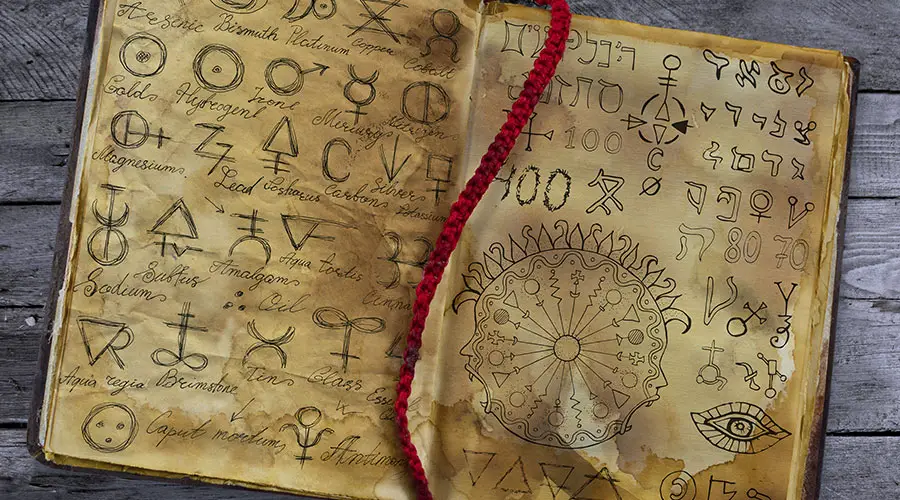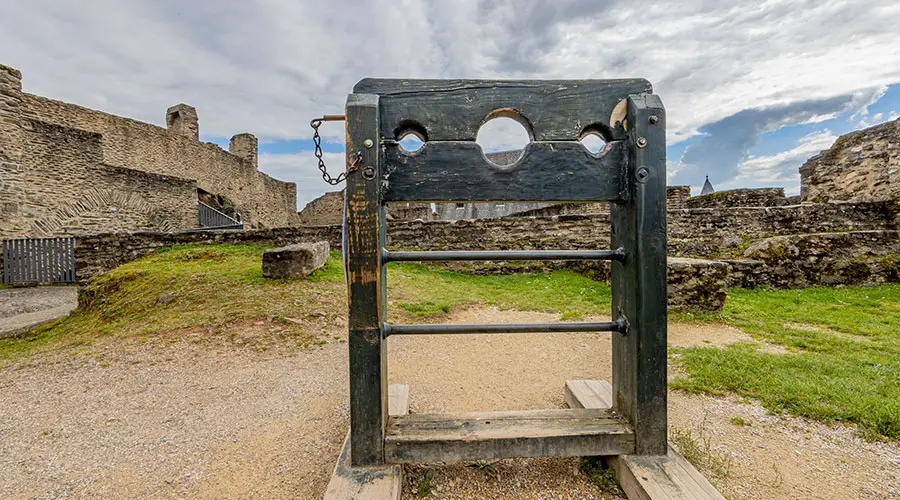Giordano Bruno was in important figure in the history of science. An advocate of Hermetic philosophy, he was a threat to the church, who eventually charged him with heresy.
Giordano Bruno was burned at the stake by the Roman Catholic Church in 1600 for heresy. His views on an infinite universe with multiple worlds, and his interest in magick and Hermeticism were deemed heretical. His burning was an important moment in the history of the church and science.
The burning of Bruno made him a martyr of the Scientific Revolution, and further cemented his place in history.

Giordano Bruno was a Threat to the Church
Giordano Bruno’s ideas were a threat to the Catholic Church because they challenged the Church’s dominant worldview and its authority. At the time, the Church taught that the Earth was the center of the universe and that the stars and planets all revolved around it. This view was based on the ideas of the ancient Greek philosopher Aristotle, which had been adopted by the Church and were considered to be the authoritative explanation of the natural world. Read more about Aristotle here.
However, Bruno’s ideas were different. He believed in the infinite universe, with multiple worlds and suns, which was a direct challenge to the Aristotelian and Church-endorsed view of the universe. He also held other ideas that were seen as heretical by the Church, such as the belief that the universe had no beginning or end and that matter was infinite.
In addition to challenging the Church’s understanding of the natural world, Bruno’s ideas also threatened the Church’s authority and power. The Church relied on its control of knowledge and interpretation of the world to maintain its power and influence, and any challenge to this control was seen as a direct threat. Thus, Bruno’s ideas were seen as a direct challenge to the Church’s authority, and his trial and execution were a way for the Church to demonstrate its power and to assert its control over what was considered to be acceptable thought and belief.
Who was Giordano Bruno?
Giordano Bruno was an Italian philosopher, cosmologist, and heretic who lived from 1548 to 1600. He was born in Nola, near Naples, and he joined the Dominican Order at a young age. Bruno was a brilliant and independent thinker who was not afraid to question the prevailing ideas of his time. He was particularly interested in the nature of the universe and the idea that the Earth was not the center of the universe, as was commonly believed.
Bruno also held controversial beliefs about the relationship between magic and science, and he was a proponent of Hermetic philosophy, which sought to reconcile science and religion. You can read more about another Dominican monk, Albertus Magnus, who practiced magic, in this article.
The Philosophy of Giordano Bruno
Giordano Bruno was known for his original and innovative ideas in the fields of philosophy and cosmology. Some of his key contributions include:
Infinite universe: Bruno was one of the first to propose the idea of an infinite universe with multiple worlds and suns, which was a radical departure from the prevailing Aristotelian view of a finite, geocentric universe.
Copernican system: While not fully embracing the Copernican system, Bruno was one of the first to understand its implications and to incorporate its ideas into his own cosmology. He believed that the universe was infinite and that the Earth was not at its center, but just one of many planets orbiting the sun.
Magic: Giordano Bruno was heavily influenced by magic and the belief in the existence of a universal wisdom that underlies all of creation. He believed that magic was a legitimate field of study and that it held the key to unlocking the secrets of the universe.

Bruno was particularly interested in the idea of magic as a way of accessing the powers of the universe and communicating with the divine. He believed that through the use of magic, individuals could gain access to a higher state of consciousness and a deeper understanding of the universe.
Matter and infinite creation: Bruno was a proponent of the idea that matter was infinite and that creation was eternal, without beginning or end. This idea challenged the Church’s belief in a creation that had a definite starting point.
Memory and perception: Bruno was also known for his innovative ideas on the nature of memory and perception, in which he proposed that memories are stored in a cosmic memory, and that perception is a result of the interaction between the individual and the universe.
Overall, Giordano Bruno was a pioneering thinker who challenged conventional wisdom and paved the way for new ideas and discoveries in the fields of philosophy and cosmology.
The Influence of Hermeticism on Giordano Bruno
Giordano Bruno was influenced by Hermeticism, the philosophical and esoteric tradition that traces its roots to the teachings of the Egyptian god Hermes Trismegistus. It encompasses a diverse range of ideas and practices, including magic, alchemy, astrology, and the belief in the existence of a universal wisdom that underlies all of creation. Bruno was a proponent of this tradition and integrated many of its ideas into his own philosophy and cosmology. In particular, he was influenced by the Hermetic concept of the infinite universe and the plurality of worlds, which he used to challenge the Aristotelian worldview that was dominant in his time and advocated by the Catholic Church. You can read more about Hermeticism here.
The Legacy of the Roman Inquisition
The Inquisition was a historical institution created by the Roman Catholic Church to suppress heresy and enforce religious conformity in medieval Europe. It originated in the 12th century and was initially established in the Kingdom of Aragon in Spain, where it was used to target the conversion of Jews and Muslims to Catholicism.
Over time, the Inquisition spread throughout Europe, and it became a powerful and feared institution that was used to target a wide range of religious and social minorities, including Jews, Muslims, heretics, and witches. The Inquisition was particularly active in Spain, Portugal, and Italy, and it was responsible for the persecution, torture, and execution of thousands of individuals.

Despite widespread criticism, the Inquisition remained active in some form until the 19th century, when it was finally abolished in most European countries. The legacy of the Inquisition continues to shape the relationship between the Catholic Church and society, and it serves as a reminder of the dangers of religious and intellectual intolerance.
Bruno was found Guilty by the Roman Inquisition
The events leading to his execution began in 1592, when he was arrested by the Roman Inquisition on charges of heresy. Over the next several years, Bruno was subjected to a long and intense trial in which he was interrogated and forced to defend his beliefs.
In the end, Bruno was found guilty of heresy by the Roman Inquisition, and he was sentenced to death by burning at the stake. On February 17, 1600, Bruno was taken to the Campo de’ Fiori in Rome, where he was tied to a stake and burned alive.
The execution of Giordano Bruno by the Catholic Church was a significant moment in the history of science and philosophy, as it represented the suppression of new ideas and the assertion of authority by the Church over what was considered to be acceptable thought and belief. Despite this, Bruno’s ideas lived on, and his contributions to the fields of philosophy and cosmology continue to be recognized and studied today.

The Influence of the Bruno Trial on the Trial Against Galileo
The trial of Giordano Bruno was a significant event in the history of the Catholic Church’s relationship with science and philosophy, and it set a precedent for the later trial of Galileo Galilei. The trial of Bruno demonstrated the Church’s willingness to suppress new ideas that were perceived as a threat to its authority, and it established the power of the Inquisition to enforce religious conformity.
The trial of Galileo, which took place several decades after the trial of Bruno, was heavily influenced by the earlier event. Galileo was a prominent scientist and astronomer who was charged with heresy by the Catholic Church for his support of the Copernican theory, which held that the Earth and other planets revolve around the Sun. The trial of Galileo was similar to the trial of Bruno in that it represented a conflict between new ideas and the established authority of the Church.
The trial of Galileo was a turning point in the history of science and the Catholic Church, and it demonstrated the Church’s intolerance of ideas that challenged its authority. However, despite the suppression of Galileo’s ideas, the scientific revolution continued to unfold, and the ideas of Galileo and other scientists helped to lay the foundation for modern science and technology.
Recommended Reading
If you want to continue exploring this subject more deeply, you can see which books I recommend by clicking here.

